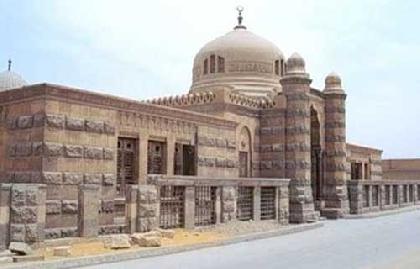
Khanqah and Mausoleum of Emir Qawsun
The Khanqah and Mausoleum of Emir Qawsun lies in El Qaderya Street off El Sayyida Eisha square. It was erected by Emir Qawsun who was the husband of
 The Mausoleum of Imam El-Shafey lies 600 meters away from a square that carries his name, on the right side of the façade of El-Imam El-Shafey Mosque. The tomb of Sayyid Muhammad Abd El-Hakam and the cenotaph of Sultan El-Kamil Ayyub and his mother also can be seen near by this mausoleum. This tomb is considered as one of the largest mortuary chambers in Egypt and is still visited by a large number of people till now whether Egyptian or non Egyptian due to its historical and religious significance. The mausoleum was built in the late Ayyubid period by El Kamil Mohamed Ibn El Adel, the nephew of Salah El-Deen El-Ayyuby. El Imam El Shafey is the one who initiated the Shafey Mazhab, one of the main four rites of Sunni Islam. After coming to Egypt in the 9th century, he died in 820 and was buried in this mausoleum.
The Mausoleum of Imam El-Shafey lies 600 meters away from a square that carries his name, on the right side of the façade of El-Imam El-Shafey Mosque. The tomb of Sayyid Muhammad Abd El-Hakam and the cenotaph of Sultan El-Kamil Ayyub and his mother also can be seen near by this mausoleum. This tomb is considered as one of the largest mortuary chambers in Egypt and is still visited by a large number of people till now whether Egyptian or non Egyptian due to its historical and religious significance. The mausoleum was built in the late Ayyubid period by El Kamil Mohamed Ibn El Adel, the nephew of Salah El-Deen El-Ayyuby. El Imam El Shafey is the one who initiated the Shafey Mazhab, one of the main four rites of Sunni Islam. After coming to Egypt in the 9th century, he died in 820 and was buried in this mausoleum.